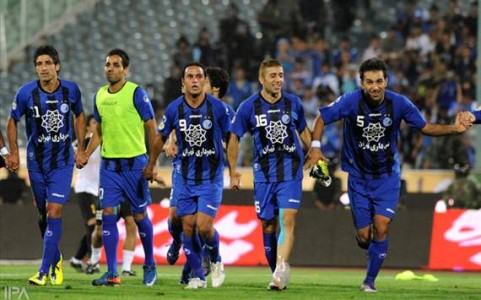
The Asian Football Confederation's (AFC) inspection to decide on whether Iranian clubs can qualify for the Asian Champions League (ACL) is a never-ending, twisting melodrama. The fate of Iran’s two most popular clubs, Esteghlal and Persepolis, is still undecided, with both sides awaiting the AFC's verdict on their status for the ACL from 2012 onwards.
Esteghlal ended their last campaign with a respectable runners-up position in the domestic league. Persepolis, on the other hand, despite a disappointing season, earned their 2012 ACL spot through their Hazfi Cup triumph.
But, based on the AFC’s strict new criteria, finishing among your domestic league’s top four no longer guarantees a spot in the continent’s top-tier club competition every season. Financial stability, quality of facilities, club youth programs and sound club governance are now considered the main criteria analysed when the AFC consider the rating of that particular league and their qualified teams.
It is similar to Standard & Poor's (S&P) financial ranking system, which leads to the subsequent upgrade or downgrade of a country’s credit rating. And, similar to S&P’s recent downgrade of the United States of America's credit rating, a shock that jolted the American market, Iran’s two Tehran giants may soon face the same downgrade verdict by Asian football's credit rating agency, known as the AFC Special Mission Team (SMT).
Following full inspections of the Persian Gulf Cup clubs by the SMT, only three teams, Rah Ahan, Sepahan and Zob Ahan, out of 18 were approved as 'professional'. The verdict noted that many clubs had flaws that needed to be fixed quickly ahead of the September 21 deadline or face the AFC downgrades. Of the 15 problematic clubs, Persepolis and Esteghlal face the most severe consequences in the coming months. Accused of flaws in governance soundness, missing both club director and club board members, the Reds and Blues were warned to submit their top-tier officials’ lists to the AFC by September 12.

"To make matters worse, sadly board members and club directors of the two clubs change as frequently as any political swings in government."
The AFC’s private emails turned into public warning letters and went viral, but stakeholders turned a blind eye. As much as the AFC likes to ignore the bitter truth about these two clubs, with the fan base of over 20 million fans each, they are still fully funded by the government. The club board members are directly appointed by Iran's Sport Ministry, with the approval of the President, and the club director is chosen by board members. In a sense, an indirect government intervention.
The clubs’ budgets are still funded by government grants and loans, an interest-free version of European Bank’s Greek bail-out, if you will. There are no public shareholders to have a say in decision making at the club, while sponsorship and media rights revenues of the clubs are all directly owned by government.
To make matters worse, board members and club directors of the two clubs change as frequently as any political swings in government. The most recent example is the appointment of Persepolis board members by Iran’s new Sports Ministry earlier this week. They have decided to introduce a novice in sport and well-known revolutionary-guard senior official, closely affiliated to President Mahmoud Ahmadinejad, to the Reds’ management board; he was then immediately chosen as club director.
Following this controversial move, Iran’s new sport minister also appointed Esteghlal board members, whom, surprisingly, consisted of the five officials who caused Esteghlal’s shocking disqualification from ACL back in 2005 when they submitted their squad list after the AFC’s deadline. And the same sport minister, despite weeks of public reminders regarding the September 12 deadline by the AFC, only attempted to appoint two clubs directors and board members by that date. Coincidental? Maybe ... Treason? More likely.

"The stakes are high for the millions of red and blue fans, who suffer from mismanagement of their clubs by intervening government officials."
The AFC’s final decision on the position of qualified clubs will be known on November 21. The stakes are high for millions of red and blue fans, who suffer from mismanagement of their clubs by intervening government officials.
The stakes are high for the government officials too. The multi-million dollar business entities owned by government would suffer bizarre public relations embarrassment and financial problems if the clubs are refused permission to participate in the ACL.
And, if the AFC is keen on applying the rule of law, with requires fully privatised competitive clubs with sound governance throughout Asia by 2013, Esteghlal and Persepolis - to the disappointment of so many - may well be close to just such a catastrophic downgrade.